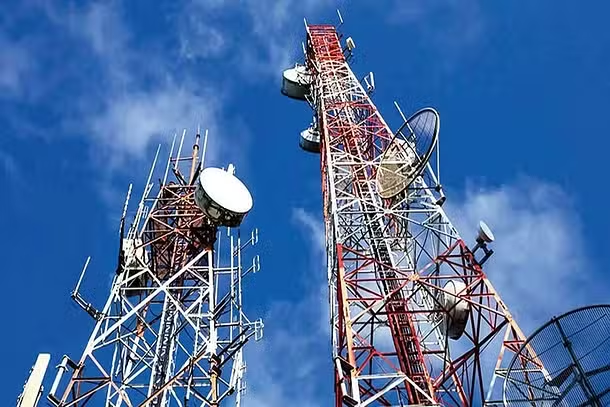India’s Telecom Sector is pivotal in propelling the country’s digital advancement. It has achieved remarkable milestones characterized by enhanced connectivity, improved infrastructure, and a commitment to innovation.
Recent developments, including the unprecedented rollout of 5G technology and the expansion of BharatNet, underscore the Government’s dedication to closing the digital gap, especially in rural and underserved regions.
This vision of transformation is further solidified by Budget 2025, which allocates INR 81,005 crores to strengthen infrastructure, prioritize the growth of BharatNet, and promote domestic manufacturing.
The budget’s key initiatives are designed to boost local production, encourage the adoption of new technologies, and ensure that India maintains its position as a frontrunner in the global digital landscape.
India’s Telecom Sector: The Vision Underpinning Budget 2025
In the 2025 Budget, the Indian government acknowledges the essential role of infrastructure in promoting digital inclusivity.
This is particularly evident in the focus on BharatNet, an ambitious initiative aimed at delivering broadband connectivity to rural communities, alongside the burgeoning domestic manufacturing sector.
The government’s emphasis on these areas outlines a strategy for a self-sufficient ecosystem that embraces advanced technologies and nurtures growth in emerging sectors such as artificial intelligence, the Internet of Things, and cloud computing.
Through strategic investments and essential policy reforms, the government aims to catalyze growth, further advancing technological progress and ensuring that India remains a significant contributor to the global digital economy.
BharatNet: Bridging the Remote Areas of India
A primary emphasis of Budget 2025 is BharatNet, which has been allocated a substantial investment of INR 22,000 crores. This initiative aims to establish infrastructure that will deliver high-speed broadband connectivity to Gram Panchayats and various rural locales.
Given that over 60% of India’s population lives in rural areas, this expansion is vital for promoting inclusive development.
BharatNet is anticipated to enhance the capabilities of rural communities by improving access to education, healthcare, e-governance services, and fostering local entrepreneurship opportunities.
Through this budgetary commitment, the government is aligning its objectives with the broader vision of a digitally connected India.
It aims to facilitate economic advancement by ensuring that remote regions are not overlooked, allowing rural enterprises to tap into global markets and providing individuals with enhanced access to digital resources and services.
Strategic Emphasis on Manufacturing
In conjunction with BharatNet, another significant element of Budget 2025 is the government’s intensified focus on enhancing domestic manufacturing.
The reduction of Basic Customs Duty (BCD) on Carrier Grade Ethernet Switches from 20% to 10% represents a strategic initiative to encourage local production and lessen reliance on imports.
This adjustment not only decreases the costs associated with deploying high-speed networks but also significantly benefits India’s electronics manufacturing sector.
Moreover, the budget exempts BCD on various essential inputs, components, and sub-components utilized in the production of cellular mobile phones and satellite-based services.
These measures are expected to reduce costs, foster innovation, and stimulate local production of equipment. This will enable India to establish itself as a global center for equipment manufacturing while simultaneously creating opportunities for local businesses.
Policy Initiatives to Improve Business Operations
A significant aspect of Budget 2025 is its emphasis on enhancing the business environment within the sector.
This objective is pursued through various direct tax initiatives, including the introduction of a new income tax legislation, the streamlining of Tax Deducted at Source (TDS) and Tax Collected at Source (TCS) regulations, as well as a presumptive taxation framework designed for non-residents offering services to domestic companies involved in electronics manufacturing.
Furthermore, the broadening of safe harbour rules and the implementation of strategies to ascertain the Arm’s Length Price (ALP) for international transactions over a three-year period demonstrate India’s commitment to aligning its tax framework with international standards.
These initiatives are anticipated to draw increased investment, provide tax stability, and foster a conducive atmosphere for business development.
The Growth of Artificial Intelligence, IoT, and Cloud Technologies
As India progresses, its role in facilitating emerging technologies is increasingly vital. The infrastructure serves as the foundation for advancements in artificial intelligence (AI), the Internet of Things (IoT), and cloud computing.
These domains are swiftly reshaping the global environment, and India is strategically positioned to lead in leveraging the capabilities of these technologies.

The allocation of INR 2,000 crores to the AI Mission in Budget 2025 underscores the government’s dedication to cultivating a strong AI ecosystem.
This initiative aims to create strategic programs and collaborations that will promote AI-driven innovations across both public and private sectors.
Additionally, the ongoing growth of data centers in India, spurred by the rising demand for digital services, has rendered infrastructure more essential than ever.
As an increasing number of businesses embrace cloud computing and IoT, the sector’s contribution to supporting these services will continue to expand.
Expert Editorial Comment
In summary, the Union Budget for 2025-26 marks a significant advancement in the modernization and development of India’s Telecom Sector.
The budgetary allocations are designed to position the country at the forefront of 5G, artificial intelligence, the Internet of Things, and cloud computing, thereby fostering an environment conducive to innovation and sustained economic progress.
By emphasizing the importance of BharatNet, lowering tariffs on essential infrastructure, and encouraging local manufacturing, the government is establishing a robust framework that will serve both urban and rural populations effectively.
The government’s aspiration for a digitally interconnected India transcends mere technological advancement; it aims to foster a more equitable and inclusive society.
By addressing the digital divide and supporting domestic production, India’s sector is poised to continue its role as a catalyst for innovation, job creation, and sustainable economic development in the years ahead.

